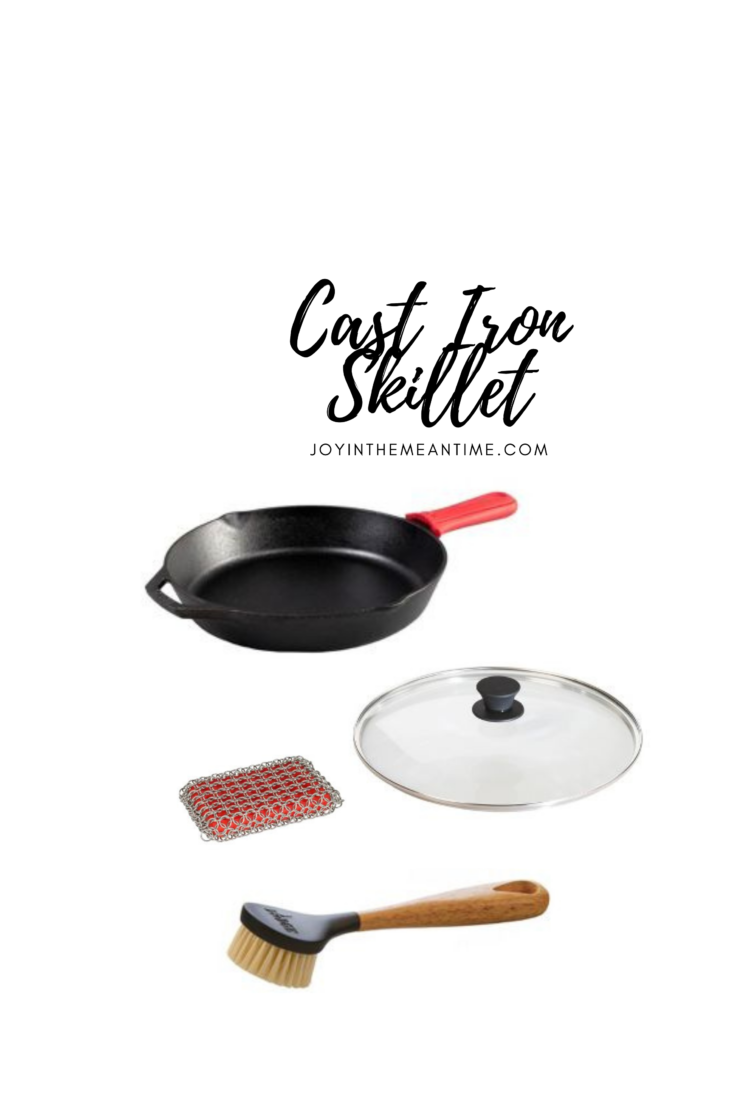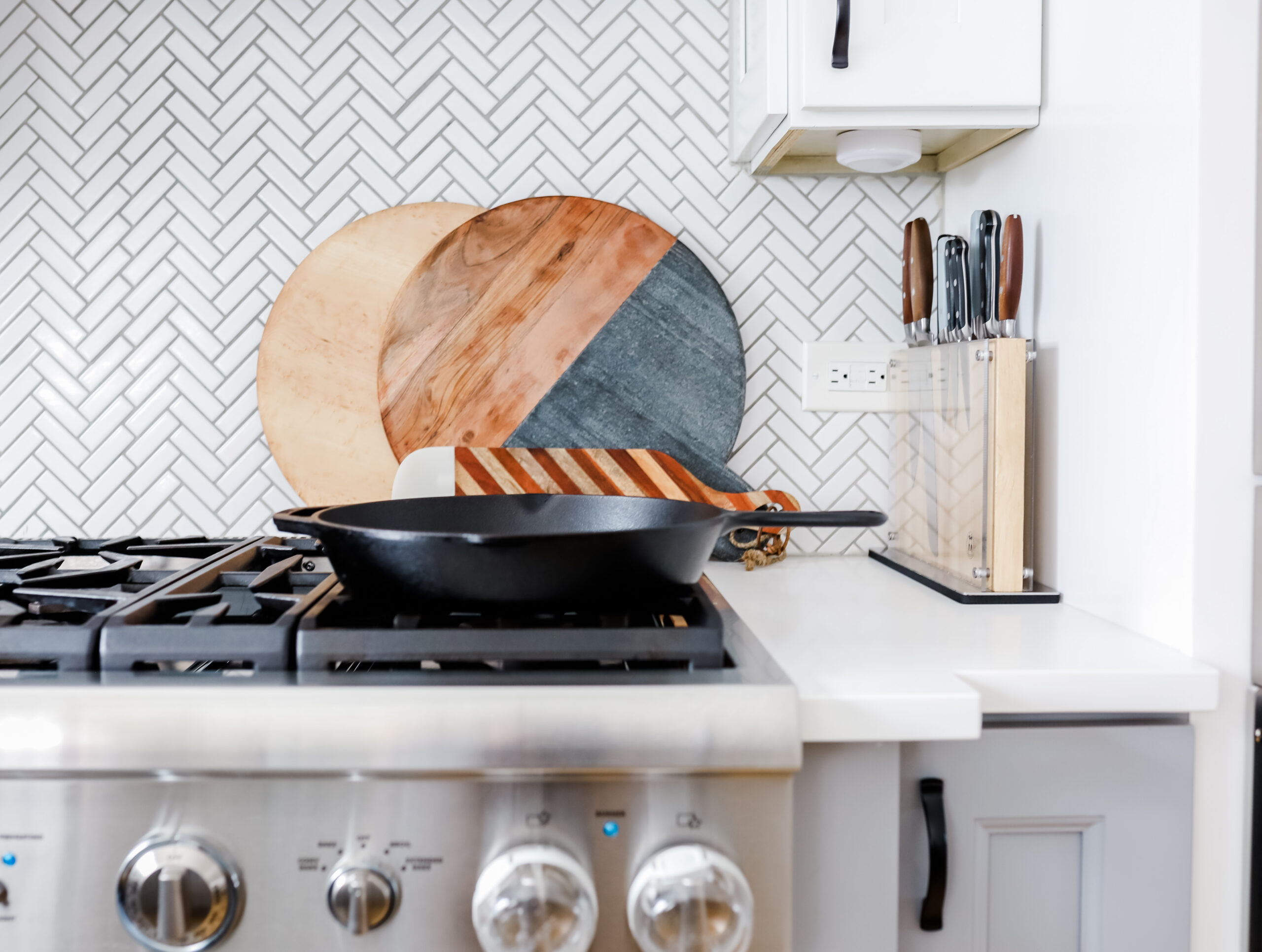Raise your hand if you have been, or are currently intimated by a cast-iron pan. *We all raise our hands* ha! I tried to use them a number of times but ended up with a rusty pan and lots of food bits that never quite came off. However, the deeper I pursued my love of cooking, the more I realized that I had to give it another go. So many cooks and chefs would rave about their cast irons, so I knew there had to be something to it. Well, let me skip to the good part … THEY ARE INCREDIBLE!
what to know
Lodge and other brand pans can come preseasoned, but it’s important to maintain it with each use. Skipping the correct care can result in a rusty pan stripped of its seasoning, which is one of the main magical things about these skillets. Cast iron pans are very affordable and will last a lifetime if they are well cared for. I have even joked (but not really) about passing it down to my kids! Ha, they’re the luckiest!
If you need to reseason completely, follow the below steps:
- Wash your pan with hot water and soap
- Wipe dry with a paper towel- keep this in mind, as you don’t want to end up with black dish towels
- Using a new paper towel, apply a thin layer of avocado oil all around the pan, including the bottom. The reason for the avocado oil is that it has a higher heat point
- Place upside down on a rack in your oven. Be sure to put either aluminum foil or a baking sheet below to catch any grease
- Let it “bake” at 325 degrees Fairenheit for 1 hour
- Turn off the oven and let the pan cool completely inside

Regular care
Assuming your pan is fully seasoned, below are the steps to follow after each use:

- The best and easiest way to clean your pan is right after use, when it is still hot. Carefully (you will need to use a pot holder or dish towel to hold the pan), and using a wooden spoon or spatula, scrap and remove any larger bits, then place into an empty sink
- Using HOT HOT water (if you use cold, the fat or oil used in the cooking process will begin to congeal), and begin to scrub with the brush or metal sponge (no soap)
- Once cleaned of any and all bits, rinse thoroughly
- Sprinkle course sea salt into the pan, and using a paper towel, carefully begin to scrub (the pan will still be warm)
- Rinse thoroughly (if there are still bits of salt left, it will leave white marks around the pan as it dries)
- Dry with a clean paper towel, and place on the stove over low heat to dry completely
- Once the pan has cooled completely, use a paper towel and rub 1/2t of avocado oil into the pan (or oil or fat of choice)
- Store where convienent
Tips
- It’s important to ensure the pan is cooled completely after cleaning. This helps the pan to seal, creating the barrier needed for a nonstick surface
- Using soap to clean a cast iron inbetween uses is personal preference. There are a few schools of thoughts on soap, but in my experience, you don’t need it unless you are reseasoning, as it can leave an after taste. The soap is not necessary to kills germs, as this happens when you are drying over heat on the stovetop
- I prefer using paper towels, as you might leave black marks and staining on any dish towels
- When cooking, always preheat your pan, then add your oil or fat. This is the best way to create the seal needed for a nonstick surface
- Wooden and metal utensils are best
- Rust happens when the pans are not fully dried or are left soaking
- If you were unable to clean right away, reheat the pan with some water, and begin with step 1
Shop this post
I hope you found this post helpful! Be sure to comment with any other must-knows about cast iron care.
In the meantime, enjoy!

